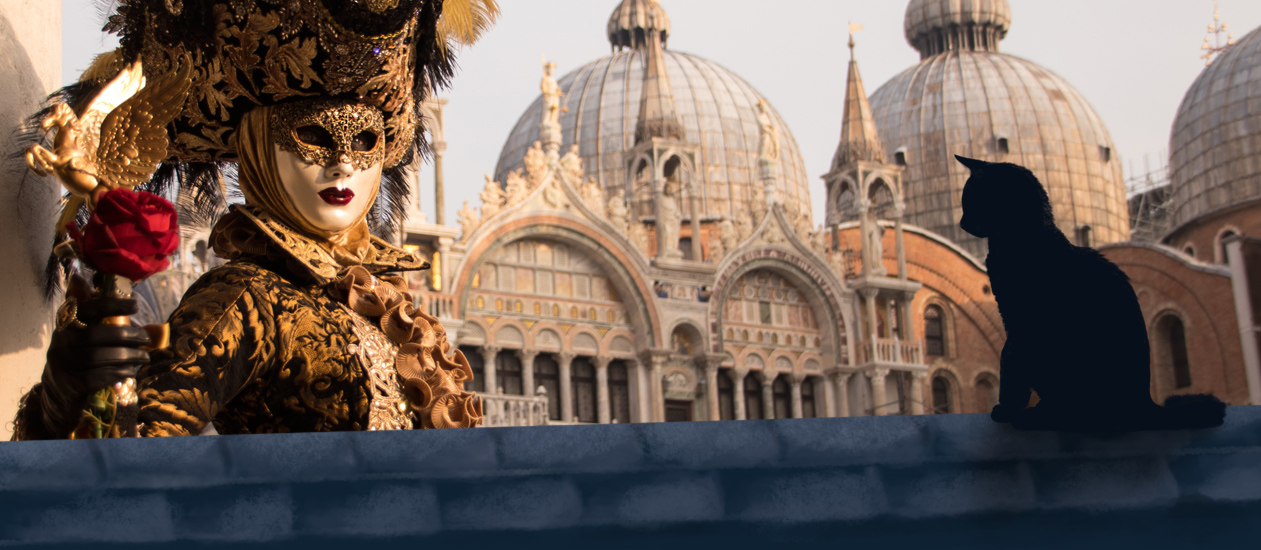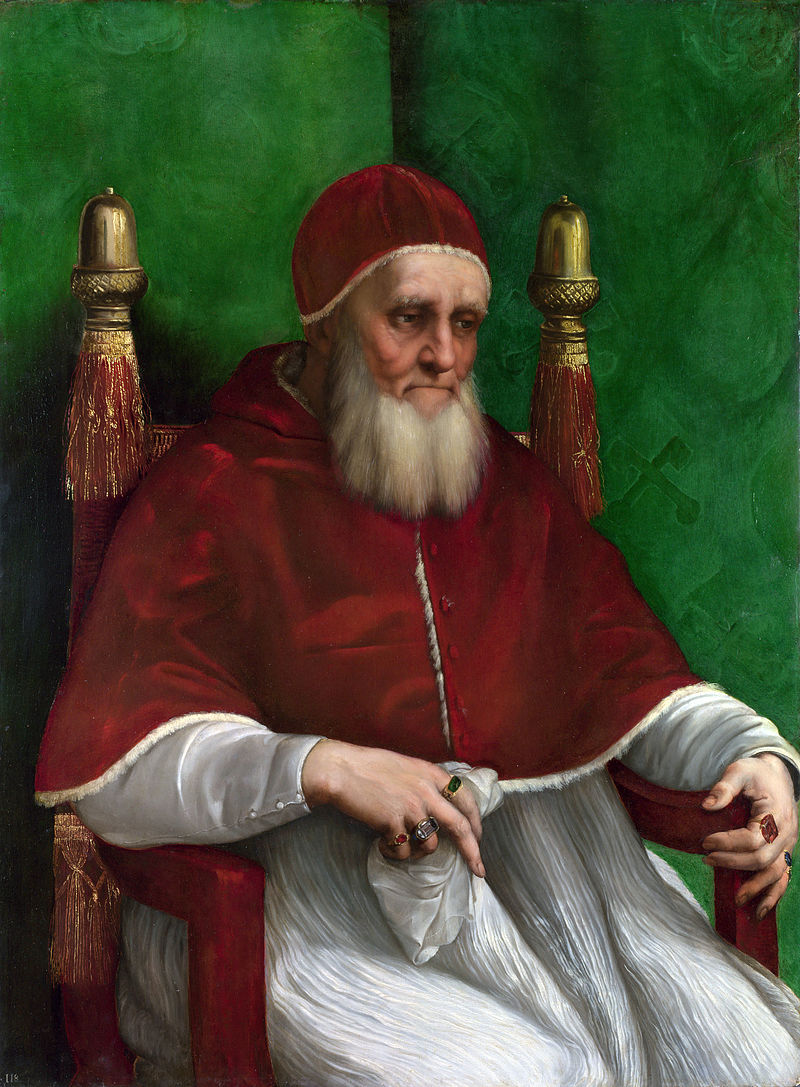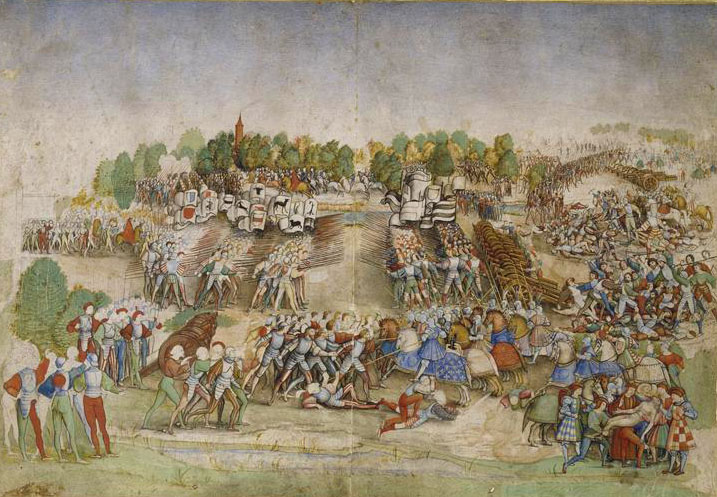Church of Venice
It is not a religion. It is a snub to the Papacy. I refuse to acknowledge the validity of a 'religion' founded purely to fight back against a pope understandably attempting to lesson their militarism. - Bishop Puccino Lignago, Milan, 1532The Church of Venice is one of the few consolidated Oppositionist churches in the world. As one of the earliest churches to diverge from the Roman Catholic Church in 1524, and led by Martin Luther himself who resided in Venice, the religion has much in common with Lutheranism.
History
The Republic of Venice was a powerful political entity in the 16th century. For centuries, they had been loyal supporters of the Catholic church. In 1509, Julius II became pope after his predecessor's short and sickly reign. Although the previous pope, Pius III, had aimed to accomplish peace in the Papal States, he was so often bedridden with gout that not much was accomplished. Julius II, later known as "the Warrior Pope", came in like a lion to re-affirm control of the Papal States.
Julius II's first order of business was to secure control of the Papal armies. Once this was accomplished, he moved to re-establish Papal control over northern Italy by demanding that Venice return the land it had seized. The Republic of Venice offered to acknowledge Papal sovereignty and to pay Julius II an annual tribute, but refused to surrender the cities themselves. In 1513, Julius II established the League of Cambrai - an alliance between the Papacy, France, and the Holy Roman Empire - to oppose Venice and forcibly retake control of the port cities. Julius II issued an interdict against Venice.
What followed was the War of the League of Cambrai, during which the Republic of Venice fought primarily against French forces. Over the next few years, borders in northern Italy were in frequent flux.
Meanwhile, religious turmoil took over the Holy Roman Empire after 1517, when Martin Luther began spreading his criticisms of the Catholic Church. These critiscisms did not take hold in many places; the majority of regions who had been fed up with the church had already converted to Arbitriumism in the previous century.
In 1522, Francesco Melzi was caught at the border between the Papal States and Venice by a military checkpoint. Melzi was attempting to flee the church, who demanded he destroy his research into deciphering Babelian. Melzi unfortunately lost the majority of the book he was translating, and he and his wife fled into Venice with the remnants of their work.
They were offered sanctuary in Venice, as the republic was still excommunicated from the church and actively at war with them. The Doge of Venice saw promise in Melzi's work and saw an opportunity to gain a weapon against their opponents (as Venice was losing ground in the war at this point).
In 1523, Melzi provided a rudementary pathstone formula that could be used to set a timed explosion of fire to ambush an approaching army. From this point on, the tide of war changed and Venice began to regain territory. The Doge, Andrea Gritti was fully on-board with translating Babelian, although the position of the Catholic Church was that it was utter heresy.
Gritti, who was far more practical than he was religious, decided that if Catholicism would not allow him to use this world-changing technology to further his republic's power, he would look to a religion that would. He considered converting the republic to Arbitriumism, but foresaw future conflicts with the Patriach of Armagh just as they were currently engaged in conflict with the Pope. Instead, he invited Martin Luther to come to Venice and offered to shelter him from the church officials calling for his head.
In 1524, Andrea Gritti converted to Protestantism and created the Church of Venice with himself as its leader.
Venice will follow the leadership of Venetians. No longer will we allow ourselves to be controlled by Rome. Our city, our republic, our church. - Andrea Gritti, October 16th, 1524
Tenets of Faith
As an Oppositionist church, the Church of Venice holds that Jesus Christ is the Messiah who died for our sins, and that the faithful with join Him in Heaven after death. Unlike the Catholic Church, the Church of Venice believes that salvation can be achieved through faith alone, and does not promote good works or the sale of indulgences. They do not look to the Pope as an authority.
Free will: Humans are predestined to follow God's chosen path. Free will is a result of Satanic influence. Consultations with diviners are permitted, but not encouraged.
Soul Guides : As a trade hub with significant ties to the Muslim Turkish Empire and Egypt, Venice is used to seeing soul guides accompanying people. Martin Luther embraced Penitentism in 1526, and the Church of Venice followed suit.
Penitentism
Traditional Catholic doctrine holds that cats are satanic creatures thanks to their role in tempting Eve in the Garden of Eden. Penitentism is the belief put forth by William of Rubrick in the 14th century that cats serve as soul guides as penance for aiding in humanity's fall, and should be embraced.
Founding Date
October 16, 1524
Type
Religious, Organised Religion
Demonym
Venessian
Permeated Organizations
Location




